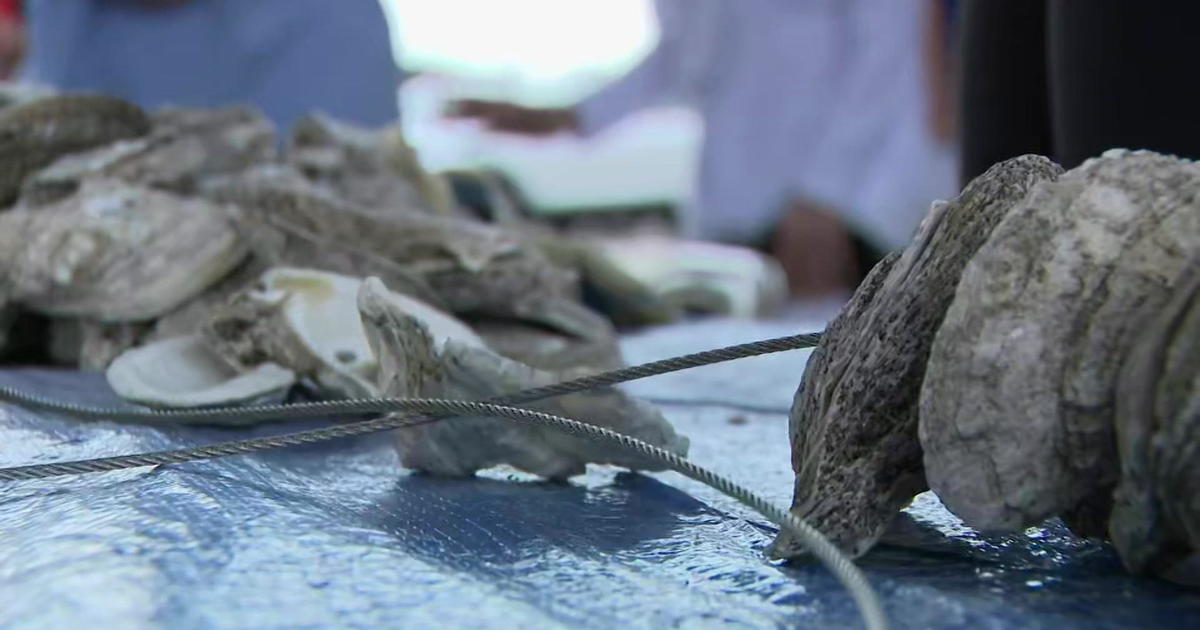Scientists sound the alarm on New Zealand's melting glaciers
NEW ZEALAND -- Every year scientists in New Zealand fly over some of the country's most iconic glaciers -- ancient ice "rivers" that descend from the Southern Alps, a spine of mountains that extend along the South Island. And almost every year, they find them shrinking.
This year was no different.
At the end of March, the team of scientists spent eight hours flying over the peaks, taking thousands of photographs of glaciers for the annual snowline survey. Andrew Mackintosh, a professor at Monash University in Australia who was on the flight, said in a statement that he was "shocked" by what they saw.
Some of the smaller elevation glaciers had largely disappeared, he said, while the famous Franz Josef and Fox glaciers showed marked signs of retreat.
"The observations this year reinforce the view that we are continuing to see ice loss across the Southern Alps," Andrew Lorrey, principal scientist at the research body National Institute of Water and Atmospheric Research (NIWA) and coordinator of the survey, told CNN.
Glaciers are huge masses of ice that build up in and around mountains. They grow in cold, snowy winters and retreat when temperatures warm. Glaciers are fresh water sources for nearly 2 billion people globally, but their rapid melting poses a huge risk: not only is it increasing the risk for deadly flash flooding, the melting ice is driving sea level rise.
Two years of severe, record-breaking heat have taken a toll on the glaciers -- 2022 was New Zealand's hottest year ever, beating a record that was set just a year earlier. But the trend of declining ice is long term.
It's difficult to witness, said Lorrey, who has been on these aerial surveys since 2009. "I'm seeing this beautiful part of our natural environment slipping through our fingers. And if you've experienced a glacier firsthand, they are absolutely breathtaking and mind-blowing and life-altering."
The snowline survey, organized by NIWA, has happened almost every year for nearly five decades and aims to capture a snapshot of a set of more than 50 glaciers -- ranging in size and elevation -- as close as possible to the end of snow and ice melt season.
The scientists are looking specifically at the snow that coats them. By understanding where the snowline is "you capture something about the health of our glaciers," Lorrey said.
The snow, which provides a nourishing and protective layer for the glaciers, starts in the autumn and continues until spring.
Lorrey has a financial analogy for the process: The snow is like a savings deposit for the glacier, a buffer against the warmer period ahead. When the melt season starts in the spring, it has to go through this "savings account" of new snow before it reaches the body of the glacier.
In years when the snowline is lower on the mountain, the glacier can bulk up and is able to advance further down the slope -- it has a healthy balance. But when the snowline is higher up, more of the glacier is exposed to melting -- sending it into the red -- and it will shrink.
"Right now, we see rapid changes happening in the mountains, with indications that the snowline rise is accelerating along with ice loss," Lorrey said.
The results from this year's flight will be fed into a report on longer term variability in the glaciers which will come out later in the year.
The climate crisis is having a huge impact. "It's mostly temperature changes that drive what glaciers in New Zealand are doing," Lauren Vargo, a glaciologist at the Victoria University of Wellington, who was part of the survey, told CNN.
The extreme melting in 2018, one of the worst years on record for New Zealand's glaciers, was made up to 10 times more likely by climate change, according to a 2020 study co-authored by Vargo and Lorrey.
As a scientist, at first the dramatic change in the glaciers "was exciting" in some ways, said Vargo, who has been studying them since 2016. But the persistence of this trend is tough. "It also feels sad and scary when you think about what's driving it," she said.
"As the current warming trend continues, we will keep losing more glaciers," said Lorrey. And this is a global trend. Up to half the world's glaciers could disappear by the end of the century, even if ambitious climate targets are met, according to research published in January.
In addition to the impacts of climate change, natural climate variations have also played a role. The unusually long run of La Niña years, which have just ended, brought warmer-than-average sea and air temperatures, helping to drive glacier melting.
Its counterpart, El Niño, which often brings cooler conditions to this part of New Zealand, is forecast for later in the year and may provide a temporary reprieve.
"I always look forward to an El Niño and seeing a snow line that is where it normally should be," Lorrey said. But, he cautioned, "it's not going to save the bacon of the glaciers." These years "occur too few and far between to counteract the ongoing warming trend that we've been experiencing."
The loss of ice is is keenly felt, Vargo said. "People in New Zealand have this connection to the glaciers."
Where once it was possible to park in the car park of a national park and walk a short distance to touch a glacier, now that's much less common -- people often need to go further into the mountain, even fly there on small planes.
"It's an experience that will be out of reach for many," Lorrey said. "A loss of our glaciers will have a significant impact on our relationship with and experiences in the environment."
These "water towers," as Lorrey calls them, also have an important role in supplying high Alpine streams, especially during years of drought.
The shifts that are happening are a reminder that our mountains -- and other places around the world -- are changing quickly, he said. Glaciers are a "a highly visual element of environmental change that tells us there are other things that we are not seeing."



